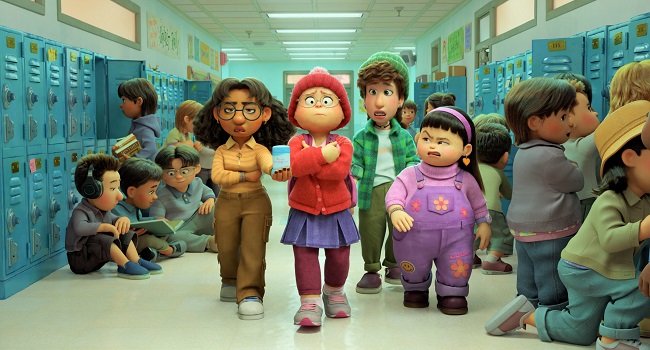Domee Shi, a writer and director, earned an Academy Award for her work on the Pixar short film Bao three years ago.
It captures something amusing and heartbreaking about the cultural and generational gaps that may separate Asian immigrant families in its lovely and bizarre tale of a Chinese Canadian mother and a steamed dumpling that comes to life.
In her first feature film, Turning Red, Shi delves even further into the tangled web of Asian parent-child relationships, and she does so with an even crazier premise.

Something like this movie might result if you were able to combine Carrie and The Joy Luck Club and yet maintain a PG certificate.
Contents
Protagonist of this Drama
Meilin Lee (Rosalie Chiang), a little girl of 13, is the protagonist of this drama set in the early 2000s in Chinatown, Toronto. Mei is a respectful perfectionist; in her spare time, she assists her parents in maintaining a temple dedicated to their Chinese ancestors.
Mei’s father is quiet and reserved, while her mother, Ming (a fantastic Sandra Oh), is overprotective. Ming is extremely interested in her daughter Mei’s academics, and she also strictly monitors Mei’s social life in the hopes that she won’t be influenced too much by Western culture.
Mei Seems Normal Teen With her Own Passions and Hobbies
Mei seems like the ideal daughter, but she is just a normal teen with her own passions and hobbies. She’s only begun to pay attention to males, and she and her pals are totally into a boy band in the vein of ‘N Sync.
She wakes up one day to find that she has been transformed into a huge red panda, complete with vivid red-orange fur and a long, bushy tail, in a twist that riffs on Kafka’s The Metamorphosis and many werewolf flicks. Immediately, she loses it.
Script Co-Written By Shi and Julia Cho
The script was co-written by Shi and Julia Cho, and it’s wonderful to see them tackle the muck of adolescence head-on. Mei’s metamorphosis is an obvious allegory for the onset of adolescence, when one’s body betrays them and they become strangers to themselves overnight. It’s also meant to be a metaphor for something else.
Turns out the red panda effect is due to some old Chinese sorcery that has been passed down through the female members of Mei’s family.
While the premise may seem absurd, it follows the same narrative logic as the rest of Pixar’s films. As soon as Mei’s feelings subside, she reverts back to being herself, a human being in a panda suit.
Her Mother Tells her to Tamp Down on her Emotions and the Panda.
But then a strange thing occurs: when her friends learn about the panda, instead of being repulsed by it, they find it adorable and totally awesome. Soon, Mei is well-liked and having a great time, and she begins to question if the panda is not a reprehensible aberration but rather the purest embodiment of her authentically joyful, humorous, and emotionally expressive nature.
Turning Red is a Story About Feelings of Shame
As a result, Turning Red is a story about feelings of shame, repression, and social anxiety, all of which are familiar to me and to many other Asian Americans. Some of Mei’s anxiety and shame as she is divided between her family and friends caused me to wince during the film.
There were also points where the comedy seemed forced, and I took exception to the character development of Mei’s mother, who seems to have been inspired by the contentious “tiger mom” stereotype.
Last Words
What this means is that there are a lot of concepts to think about after reading Turning Red. It also provides a wealth of visual stimulation. Bringing in elements of East Asian culture into the narrative and the animation is a lot of fun for director Shi and her team.
Anime influences can be seen in the artwork of the characters; for example, Mei’s panda has the same round, enormous shape as Hayao Miyazaki’s Totoro. The crescendo is an action-packed homage to both kaiju films like Godzilla and martial arts classics like Crouching Tiger, Hidden Dragon.






























